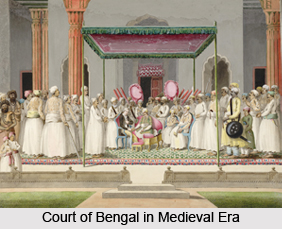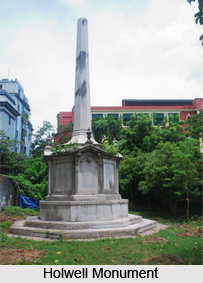 Siege of Calcutta was a battle between the British East India Company and Siraj ud-Daulah, the independent Nawab of Bengal.
Siege of Calcutta was a battle between the British East India Company and Siraj ud-Daulah, the independent Nawab of Bengal.
Capturing of Calcutta
The Nawab of Bengal aimed to recapture the city of Calcutta from European control, after tensions had risen due to the East India Company building fortifications in case of French attack as part of the Seven Years` War. The British East India Company was unprepared for the attack on June 20th, and Fort William - containing the entire European population of the city - fell almost immediately, leaving the city in Indian hands.
Trading of British East India Company
In the first half of 17th century, the trading post had been established in the area of Calcutta at the end of the seventeenth century by the East India Company, who purchased the three small villages that would later form the base of the city, and began construction of Fort William to house a garrison. In 1717 they had been granted immunity from taxation throughout Bengal by the Mughal emperor Farrukhsiyar. The city flourished, with a large volume of trade travelling down the Ganga River. The attitude of the Nawabs of Bengal, the regional governors of the territory, had been one of limited toleration towards the European traders they were permitted to trade, but taxed heavily.
Disaster of British East India Company
The first disaster to befall the British East India Company came quickly. On June 3, the Nawab`s forces surrounded the ill-prepared East India Company fort at Cossimbazar, which numbered only 50 men. Two days later, the garrison surrendered; the only shot fired was by the garrison commander, who committed suicide rather than submit. The Nawab`s army confiscated all British guns and ammunition, then marched on to Kokata.
The captured prisoners were held in a prison called the Black Hole. A narrative by one John Zephaniah Holwell, plus the testimony of another survivor to a select committee of the House of Commons, placed 146 British prisoners into a room measuring 18 by 15 feet, with only 23 surviving the night.
A narrative by one John Zephaniah Holwell, plus the testimony of another survivor to a select committee of the House of Commons, placed 146 British prisoners into a room measuring 18 by 15 feet, with only 23 surviving the night.
Renaming of Alinagar
After capturing Kolkata, the Nawab of Bengal renamed it as "Alinagar". It was only lightly garrisoned by the Indians, and was recaptured in January 1757 by a force led by Robert Clive when the Nawab led a counter-attack, but this was itself attacked outside the city on February 2 and defeated. The result was recognition of the status quo in the Treaty of Alinagar, signed on the 9th, which permitted the East India Company to remain in possession of the city and to fortify it, as well as granting them an exemption from duties.
Decline of Independent Rule of Bengal
The treaty of Alinagar made the situation fragile. Siraj- ud-daulah was forced to send much of his army westwards to protect his territory from Ahmad Shah Durrani, leaving him militarily weak; this, coupled with personal unpopularity at home and extensive political machinations at court, gave the British East India Company an opportunity to try to replace him with a new Nawab. Meanwhile, Siraj-ud-daullah"s growing involvement with the French East India Company would provide the pretext to go to war.
Battle of Plassey in 1757
The result was the Battle of Plassey, on June 23rd 1757, which was a decisive defeat for Siraj-ud-daullah, betrayed by Mir Jafar, a military commander who had agreed to change sides. The battle firmly established British East India Company"s control over Bengal, with Mir Jafar the new Nawab; it is generally seen as the start of Company rule in India, and the first major step in the development of the British Empire in India.
Related Articles
Capital Cities of India
Kolkata
History of Kolkata
Medieval History of Kolkata
History of Victoria Memorial , Kolkata
Culture of Kolkata
Monuments in Kolkata, West Bengal Monuments
British East India Company
British Empire in India
Impact of British Rule in India
Early Voyages of British East India Company
British Indian Acts
Battle of Plassey
Significance of Battle of Plassey
Siraj-Ud-Daulah, Nawab of Bengal
Mir Jafar, Nawab of Bengal



















